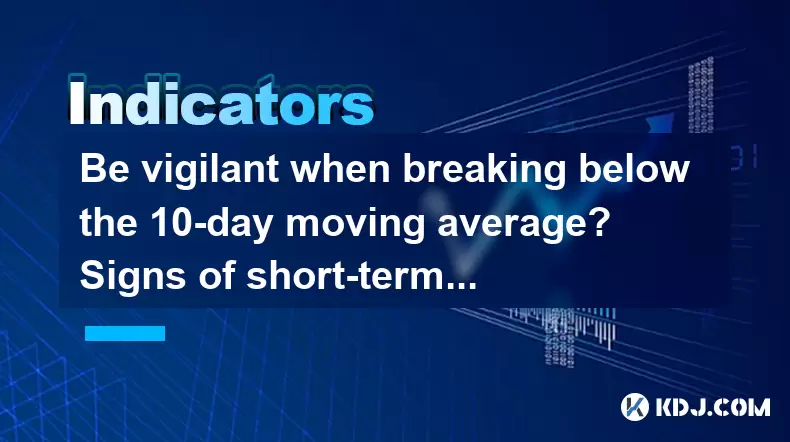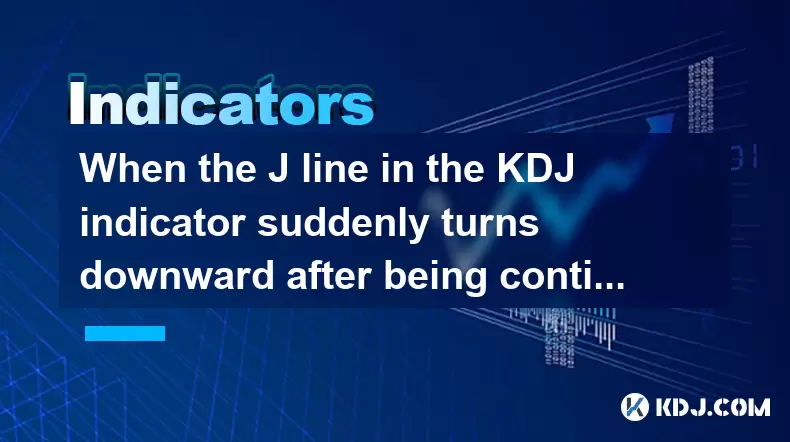-
 Bitcoin
Bitcoin $116700
0.24% -
 Ethereum
Ethereum $3973
4.34% -
 XRP
XRP $3.283
7.68% -
 Tether USDt
Tether USDt $1.000
0.01% -
 BNB
BNB $789.8
2.27% -
 Solana
Solana $176.2
3.31% -
 USDC
USDC $0.9999
0.00% -
 Dogecoin
Dogecoin $0.2238
5.14% -
 TRON
TRON $0.3389
-0.51% -
 Cardano
Cardano $0.7907
4.03% -
 Stellar
Stellar $0.4527
10.02% -
 Hyperliquid
Hyperliquid $41.07
4.27% -
 Sui
Sui $3.794
1.77% -
 Chainlink
Chainlink $19.49
10.40% -
 Bitcoin Cash
Bitcoin Cash $580.9
0.74% -
 Hedera
Hedera $0.2617
4.32% -
 Avalanche
Avalanche $23.41
3.67% -
 Ethena USDe
Ethena USDe $1.001
-0.03% -
 Litecoin
Litecoin $122.4
1.38% -
 Toncoin
Toncoin $3.364
1.49% -
 UNUS SED LEO
UNUS SED LEO $8.988
0.37% -
 Shiba Inu
Shiba Inu $0.00001295
2.82% -
 Uniswap
Uniswap $10.62
5.75% -
 Polkadot
Polkadot $3.922
4.46% -
 Dai
Dai $1.000
0.01% -
 Bitget Token
Bitget Token $4.494
2.15% -
 Monero
Monero $268.0
-1.30% -
 Cronos
Cronos $0.1523
3.68% -
 Pepe
Pepe $0.00001127
4.43% -
 Aave
Aave $285.4
4.85%
Be vigilant when breaking below the 10-day moving average? Signs of short-term trend change
A break below the 10-day moving average in crypto trading can signal a shift in short-term trends, but traders should seek additional confirmation before acting.
Jun 02, 2025 at 02:36 am

In the world of cryptocurrency trading, understanding technical indicators is crucial for making informed decisions. One such indicator that traders often monitor is the 10-day moving average (10DMA). A break below this average can be a significant event, potentially signaling a change in the short-term trend. This article delves into the importance of being vigilant when the price of a cryptocurrency breaks below the 10DMA and explores the signs that may indicate a shift in the short-term trend.
Understanding the 10-Day Moving Average
The 10-day moving average is a technical indicator that smooths out price data to create a single flowing line, making it easier to identify the direction of the trend. It is calculated by taking the average closing price of a cryptocurrency over the last 10 trading days. This average is then plotted on the chart, providing a clear visual representation of the price trend.
Traders often use the 10DMA as a benchmark to gauge the short-term momentum of a cryptocurrency. When the price is above the 10DMA, it is generally considered to be in an uptrend, and when it is below, it is considered to be in a downtrend. However, it's not just the position of the price relative to the 10DMA that matters; the way the price interacts with this average can provide valuable insights into potential trend changes.
The Significance of Breaking Below the 10DMA
A break below the 10-day moving average can be a critical signal for traders. It indicates that the short-term momentum may be shifting from bullish to bearish. This shift can be particularly significant if the price has been trading above the 10DMA for an extended period, as it suggests that the uptrend may be losing steam.
When the price breaks below the 10DMA, it is essential for traders to remain vigilant. This event can serve as an early warning sign that the short-term trend may be about to change. However, it is crucial to look for additional confirmation before making any trading decisions, as a single break below the 10DMA does not necessarily mean that a downtrend is imminent.
Signs of a Short-Term Trend Change
Identifying the signs of a short-term trend change can help traders make more informed decisions. Here are some key indicators to watch for when the price breaks below the 10DMA:
Increased Volume: A break below the 10DMA accompanied by a significant increase in trading volume can be a strong indication of a potential trend change. High volume suggests that more market participants are selling, adding weight to the bearish signal.
Price Rejection: If the price breaks below the 10DMA but quickly rebounds back above it, this can be a sign of a false break. However, if the price fails to reclaim the 10DMA and continues to move lower, it may confirm the bearish trend.
Technical Indicators: Other technical indicators, such as the Relative Strength Index (RSI) and the Moving Average Convergence Divergence (MACD), can provide additional confirmation of a trend change. For example, if the RSI moves below 50 and the MACD line crosses below the signal line, these can be bearish signals that align with the break below the 10DMA.
Market Sentiment: Monitoring market sentiment through social media, news, and other sources can provide insights into the broader market's perception of the cryptocurrency. A shift in sentiment from bullish to bearish can reinforce the significance of a break below the 10DMA.
Case Studies: Real-World Examples
To better understand the implications of a break below the 10DMA, let's look at a couple of real-world examples from the cryptocurrency market.
Bitcoin (BTC): In early 2021, Bitcoin experienced a significant break below its 10DMA after a prolonged uptrend. This event was accompanied by increased selling volume and a bearish crossover of the MACD. The break below the 10DMA signaled the start of a short-term correction, with the price eventually dropping by around 10% before finding support.
Ethereum (ETH): In mid-2020, Ethereum broke below its 10DMA following a period of consolidation. The break was confirmed by high trading volume and a bearish divergence in the RSI. This signaled the beginning of a short-term downtrend, with the price declining by approximately 15% over the next few weeks.
These examples illustrate how a break below the 10DMA, when combined with other technical and fundamental factors, can serve as a reliable indicator of a short-term trend change.
Practical Tips for Traders
For traders looking to capitalize on breaks below the 10DMA, here are some practical tips to consider:
Monitor Multiple Timeframes: While the 10DMA is a short-term indicator, it can be beneficial to monitor longer-term moving averages, such as the 50-day and 200-day moving averages, to get a broader perspective on the trend.
Use Stop-Loss Orders: To manage risk, consider using stop-loss orders when trading around the 10DMA. If the price breaks below the average, a stop-loss can help limit potential losses.
Look for Confluence: Instead of relying solely on the 10DMA, look for confluence with other indicators and market factors. A break below the 10DMA that aligns with other bearish signals is more likely to indicate a genuine trend change.
Stay Informed: Keep up-to-date with the latest news and developments in the cryptocurrency market. External factors, such as regulatory changes or major announcements, can influence the price and the effectiveness of technical indicators like the 10DMA.
Frequently Asked Questions
Q: Can a break below the 10DMA be a false signal?
A: Yes, a break below the 10DMA can sometimes be a false signal. If the price quickly rebounds above the 10DMA, it may indicate a false break. Traders should look for additional confirmation, such as increased volume and other technical indicators, to validate the signal.
Q: How long should I wait for confirmation after a break below the 10DMA?
A: The timeframe for confirmation can vary depending on the specific cryptocurrency and market conditions. Generally, traders might wait for a few days to a week to see if the price continues to move lower and if other indicators align with the bearish signal.
Q: Is the 10DMA more effective for certain cryptocurrencies?
A: The effectiveness of the 10DMA can vary across different cryptocurrencies. Generally, it is more reliable for cryptocurrencies with higher liquidity and trading volume, such as Bitcoin and Ethereum. For less liquid cryptocurrencies, the 10DMA may be less effective due to potential price manipulation and lower trading activity.
Q: Can the 10DMA be used in conjunction with other moving averages?
A: Yes, the 10DMA can be used in conjunction with other moving averages to gain a more comprehensive understanding of the trend. For example, combining the 10DMA with the 50-day and 200-day moving averages can help identify both short-term and long-term trends, providing a more robust analysis.
Disclaimer:info@kdj.com
The information provided is not trading advice. kdj.com does not assume any responsibility for any investments made based on the information provided in this article. Cryptocurrencies are highly volatile and it is highly recommended that you invest with caution after thorough research!
If you believe that the content used on this website infringes your copyright, please contact us immediately (info@kdj.com) and we will delete it promptly.
- Navigating the Crypto Market in 2025: Smart Decisions for the Meme Supercycle
- 2025-08-09 08:50:12
- DeFi, Tokenized Stocks, and NFTs: A Wild Ride in the Crypto Cosmos
- 2025-08-09 08:30:11
- AERO Price Skyrockets: Aerodrome Finance Sees Massive Surge Amid Coinbase Buzz
- 2025-08-09 08:55:19
- Coinbase, Cosmos, and dYdX: Navigating the Crypto Currents
- 2025-08-09 06:30:16
- BNB Price, Altcoins, and Predictions: What's the Buzz?
- 2025-08-09 06:30:16
- Crypto Presale Projects Primed for Gains in 2025: A New Yorker's Take
- 2025-08-09 06:50:15
Related knowledge

When the J line in the KDJ indicator suddenly turns downward after being continuously overbought, does it indicate a top?
Aug 09,2025 at 06:35am
Understanding the KDJ Indicator and Its ComponentsThe KDJ indicator is a momentum oscillator widely used in cryptocurrency technical analysis to ident...

What does it mean when the TRIX indicator suddenly diverges downward after a long period of convergence?
Aug 09,2025 at 12:56am
Understanding the TRIX Indicator in Cryptocurrency TradingThe TRIX indicator, or Triple Exponential Average, is a momentum oscillator used in technica...

What does it mean when the OBV breaks through a previous high but the price doesn't reach a new high?
Aug 09,2025 at 07:57am
Understanding the On-Balance Volume (OBV) IndicatorThe On-Balance Volume (OBV) is a technical analysis indicator that uses volume flow to predict chan...

Why is the rise limited after a MACD bottoming divergence?
Aug 09,2025 at 12:07am
Understanding MACD Bottoming Divergence in Cryptocurrency TradingThe MACD (Moving Average Convergence Divergence) is a widely used technical indicator...

What does it mean when the OBV continues to rise but the price is trading sideways?
Aug 08,2025 at 10:35pm
Understanding On-Balance Volume (OBV)On-Balance Volume (OBV) is a technical indicator that uses volume flow to predict changes in stock or cryptocurre...

Is a rebound guaranteed after an RSI bottoming divergence?
Aug 09,2025 at 08:42am
Understanding the Role of Private Keys in Cryptocurrency SecurityIn the world of cryptocurrency, private keys are the cornerstone of ownership and sec...

When the J line in the KDJ indicator suddenly turns downward after being continuously overbought, does it indicate a top?
Aug 09,2025 at 06:35am
Understanding the KDJ Indicator and Its ComponentsThe KDJ indicator is a momentum oscillator widely used in cryptocurrency technical analysis to ident...

What does it mean when the TRIX indicator suddenly diverges downward after a long period of convergence?
Aug 09,2025 at 12:56am
Understanding the TRIX Indicator in Cryptocurrency TradingThe TRIX indicator, or Triple Exponential Average, is a momentum oscillator used in technica...

What does it mean when the OBV breaks through a previous high but the price doesn't reach a new high?
Aug 09,2025 at 07:57am
Understanding the On-Balance Volume (OBV) IndicatorThe On-Balance Volume (OBV) is a technical analysis indicator that uses volume flow to predict chan...

Why is the rise limited after a MACD bottoming divergence?
Aug 09,2025 at 12:07am
Understanding MACD Bottoming Divergence in Cryptocurrency TradingThe MACD (Moving Average Convergence Divergence) is a widely used technical indicator...

What does it mean when the OBV continues to rise but the price is trading sideways?
Aug 08,2025 at 10:35pm
Understanding On-Balance Volume (OBV)On-Balance Volume (OBV) is a technical indicator that uses volume flow to predict changes in stock or cryptocurre...

Is a rebound guaranteed after an RSI bottoming divergence?
Aug 09,2025 at 08:42am
Understanding the Role of Private Keys in Cryptocurrency SecurityIn the world of cryptocurrency, private keys are the cornerstone of ownership and sec...
See all articles

























































































